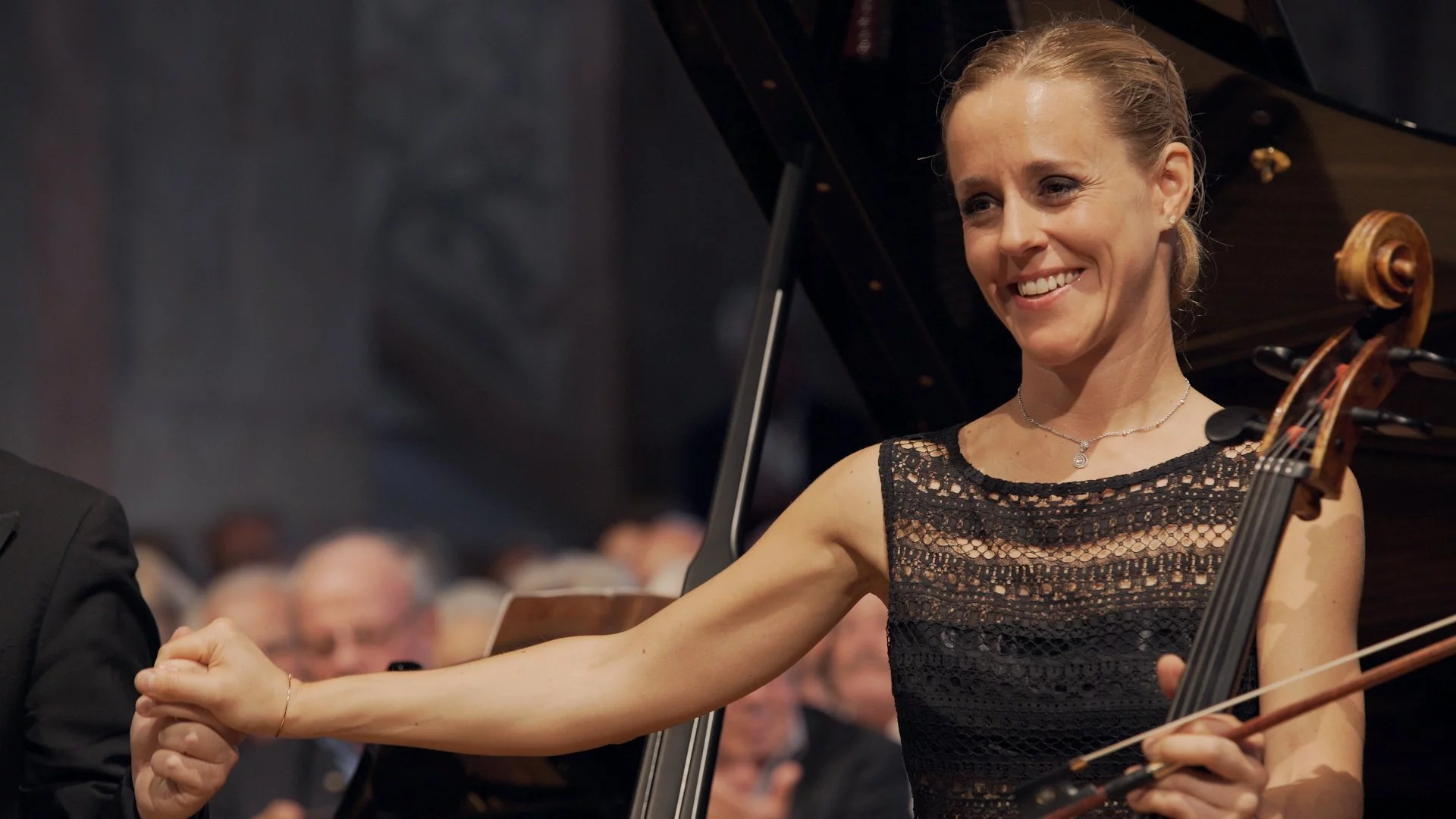A Gala with Nelson Goerner
Nelson Goerner, Piano
Sol Gabetta, Violoncello
FRÉDÉRIC CHOPIN:
Cello Sonata in G minor, Op. 65
Étude, Op. 25, No. 7 in C-Sharp Minor
Recorded on 17 July 2016 in the Church in Saanen
Sol Gabetta and Chopin
Frédéric Chopin was a genius and he chose to write most of his music for the piano. (Virtually all of his compositions include the piano!) That’s a fact and it makes all non-pianists jealous. The cellist Sol Gabetta however takes another stance: She recognizes the importance of the work he wrote for the cello. (His wonderful collaboration with the French cello-virtuoso Auguste-Joseph Franchomme inspired Chopin to write for the cello.)
One of the masterpieces Sol Gabetta chose, when she first collaborated with the Argentinean pianist Nelson Goerner, is the beautiful sonata in g-minor. It is a composition that confused Chopin’s contemporaries in 1848 in Paris. Only today it is perceived as the most passionate and noble epitome of Romanticism, particularly when Sol Gabetta is performing it with her characteristic intensity.
Franchomme’s true heir
Auguste-Joseph Franchomme and Sol Gabetta: Their careers may be centuries apart, but resemble each other in a remarkable way: First of all, both strived to enlarge their instrument’s repertoire working with prolific composers. Franchomme chose to collaborate with Chopin, Sol Gabetta asked Pēteris Vasks and Michel van der Aa to write for her. They also share the wish to play with their friends. Whoever has been to the Gstaad Menuhin Festival, knows Sol Gabetta’s favourite partners (such as Patricia Kopatchinskaja, with whom she has been playing for many years). Less known is the role Auguste-Joseph Franchomme played in the development of the string quartet: He and violinist Delphin Alard founded one of the first professional string quartets ever.
Therefore, the lightness with which Sol Gabetta and Nelson Goerner play the entire sonata in g-minor won’t surprise us. And we also hope to hear her play the other pieces Chopin wrote for her instrument: L‘Introduction et Polonaise in c-major and the Trio in g-minor (both masterpieces Sol Gabetta already recorded with her old friend Bertrand Chamayou for Sony).



